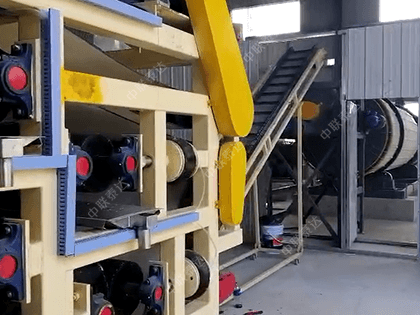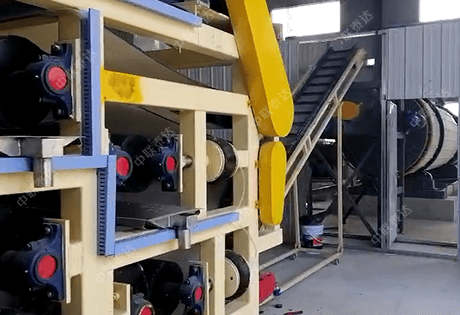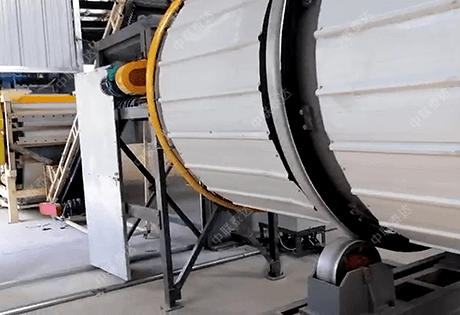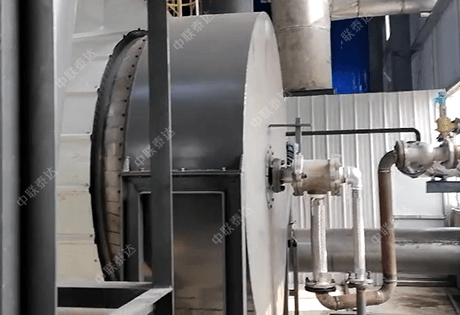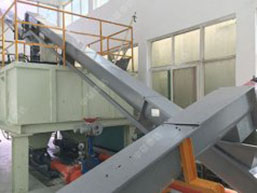TDGD steam rotary drum dryer mainly contains feeding part, dryer body, riding wheel, catch wheel, transmission device, seal device and discharging part. Dryer body is a large heat exchanger itself. Materials will exchange heat with steam in dryer so that to reach drying aim. TDGD dryer can use both steam and conduction oil as heat source. Heat medium will enter dryer through steam rotary joint and transfer heat to materials and internal air. Then, heat medium will be condensed into liquid and discharged out from drainage port.
Flow amount of heating source (taking 0.6Mpa saturated steam as example) will be controlled by regulating valve first before entering front rotary joint of dryer. Then, heating source will enter distribution tube and row-pipe in sequence. After heat releasing and condensing, heating source will be discharged to rotary joint at discharging and enter condensation trap for water discharging and air lock. Condensing water will be further disposed out of system. In order to make sure tail gas emission up to standard, wet steam will be led out from feeding end and enters wet type dust removing machine and gas-liquid separating machine in sequence. Dust removing machine is equipped with porcelain ring material and two-layer scrubbing device inside. Clean water will drop down to contact with upward gas counter currently. Tail gas is purified. Purified gas will be discharged to atmosphere through ID fan. Once reaching to a certain data, scrubbing water shall be sent back to evaporation and crystallization section. After thickening and separation, clean water will be pumped to scrubbing tower for further use so that to fulfill cycle running of scrubbing water.

Technical advantages of Taeda steam rotar drum dryer:
<1> It adopts conduction heating mode, thermal efficiency is 20% and 50% higher than traditional drying machine.
<2> Use of hot wind is very less, which causes small burden for exhaust system. Drying system consumes less power consumption. With less dust and emission amount, high material recycling rate and good environment protection effect.
<3> Suitable for large scale production.
<4> Materials will stay long time in dryer, no need back-mixing procedure. Final products are with uniform moisture and stable quality. Materials are driven forward by lifting plate and inclination angle. Residence time can be adjusted so that to avoid over drying.
<5> Simple operation, less malfunction rate and low management expense.
Sludge materials to be dried will be send to feeding inlet of dryer through screw feeder. There can be vibrating hammer set out of dryer. The vibrating hammer will beat dryer shell along with the drum rotation so that to avoid wall sticking of wet materials. Wet materials will move to discharging end gradually from feeding end. During the movement process, wet materials will constantly exchange heat with steam tubes. After preheating, temperature increasing and drying, moisture in wet materials are evaporated and enters discharging end. Dry material will be sent to next process after grinding and crushing.
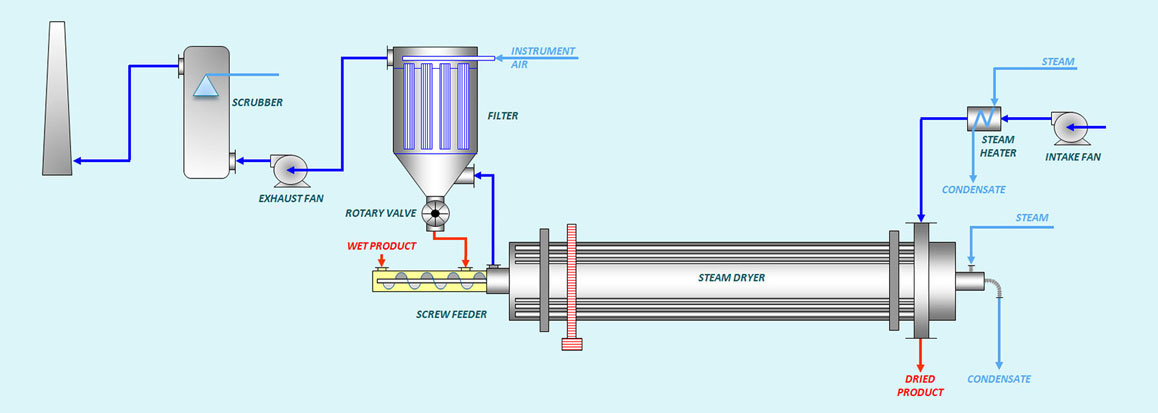
|
Model |
Capacity(t/d) |
Power(Kw) |
Steam pressure (Mpa) |
Weight (kg) |
rpm |
Dimensions (m) |
|
TDGD120 |
50 |
3 |
0.4 |
6350 |
1-4 |
5.8*1.9*1.87 |
|
TDGD140 |
100 |
4 |
0.4 |
8760 |
1-4 |
5.8*2.1*2.07 |
|
TDGD160 |
200 |
5.5 |
0.4 |
12700 |
1-4 |
6.3*2.26*2.39 |
|
TDGD180 |
300 |
7.5 |
0.4 |
13800 |
1-4 |
7.3*2.4*2.59 |
|
TDGD200 |
400 |
11 |
0.4 |
16700 |
1-4 |
7.85*2.66*2.79 |
|
TDGD220 |
600 |
11 |
0.4 |
19200 |
1-4 |
8.85*2.86*2.99 |
|
TDGD250 |
900 |
15 |
0.4 |
24200 |
1-4 |
9.9*3.16*3.31 |
 中文
中文 English
English Home
Home